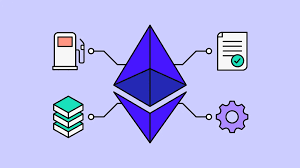When people talk about Ethereum, they often mention terms like “smart contracts” or “decentralized applications (dApps).” But at the heart of Ethereum’s ecosystem lies its primary token: Ether (ETH).
Ether is more than just a digital currency. It powers the entire Ethereum network. Think of it as the “fuel” that keeps things running. Whenever you want to send a transaction, deploy a smart contract, or interact with a dApp, you need to pay gas fees—and those fees are paid in ETH.
Unlike Bitcoin, which is often viewed primarily as “digital gold,” Ethereum’s ETH has a much broader utility. It’s not just for holding as an investment. It’s actively used every day to secure the network, pay for computations, and incentivize developers and validators to keep the blockchain operational.
Over the years, ETH has also become a major asset in the world of DeFi (Decentralized Finance), staking, and even NFTs. It’s the backbone of countless projects that rely on Ethereum’s blockchain. Without Ether, none of these applications could exist or function.
So, if you’re exploring Ethereum, remember this: ETH isn’t just a token—it’s the lifeblood of the network.

